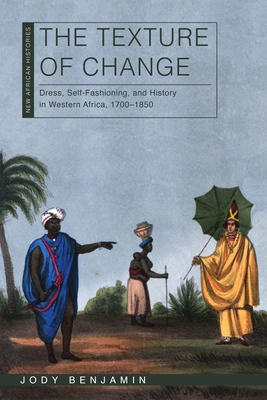
Benjamin, Jody
product information
description
s historical change across a broad region of western Africa--from Saint Louis, Senegal, to Freetown, Sierra Leone--through the development of textile commerce, consumption, and dress. Indigo-dyed and printed cotton, wool, linen, and silk cloths constituted major trade items that linked African producers and consumers to exchange networks that were both regional and global. While much of the historiography of commerce in Africa in the eighteenth century has focused on the Atlantic slave trade and its impact, this study follows the global cloth trade to account for the broad extent and multiple modes of western Africa's engagement with Europe, Asia, and the Americas. Jody Benjamin analyzes a range of archival, visual, oral, and material sources drawn from three continents to illuminate entanglements between local textile industries and global commerce and between the politics of Islamic reform and encroaching European colonial power. The study highlights the roles of a diverse range of historical actors mentioned only glancingly in core-periphery or Atlantic-centered framings: women indigo dyers, maroon cotton farmers, petty traveling merchants, caravan guides, and African Diaspora settlers. It argues that their combined choices within a set of ecological, political, and economic constraints structured networks connecting the Atlantic and Indian Ocean perimeters.
member goods
No member items were found under this heading.
Return Policy
All sales are final
Shipping
No special shipping considerations available.
Shipping fees determined at checkout.







